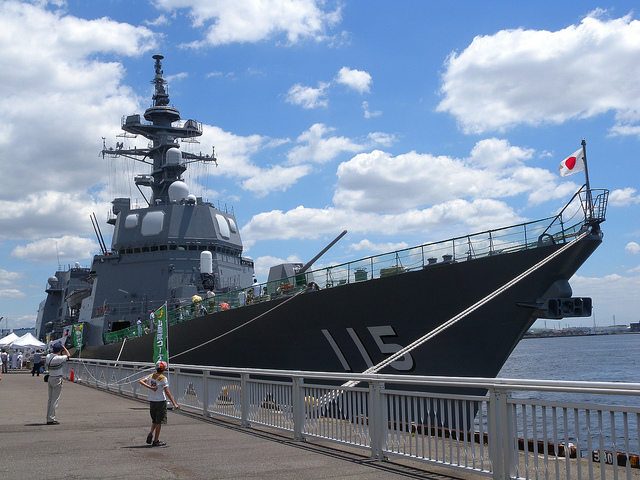The United States has started long overdue freedom of navigation (FON) operations in the South China Sea. Washington launched the FON program in 1979 to challenge coastal states’ excessive maritime claims through diplomatic engagement and operational assertion. During the Cold War the United States conducted FON operations in Soviet territorial seas, where Moscow did not permit innocent passage by foreign warships. It took 10 years for Washington and Moscow to reach a common understanding of innocent passage in 1989 after several incidents between their naval forces. Likewise Washington will continue the FON program in the South China Sea with strong determination for years to come until it can reach a common understanding of freedom of navigation with Beijing.
U.S. FON operations in the South China Sea provide both opportunities and challenges for the U.S.-Japan alliance. After the October 26 patrol of the USS Lassen within 12 nautical miles of Subi Reef, occupied by China, Prime Minister Shinzo Abe immediately said he understood the operation was conducted under international law. During a meeting with Chinese premier Li Keqiang in Seoul, Abe directly delivered his concern about China’s artificial island-building. A U.S.-Japan combined naval drill in the South China Sea was also announced. Tokyo will support U.S. diplomatic and military efforts to preserve freedom of navigation in the South China Sea.
The recent U.S. FON operation in the South China Sea will allow the Japan Maritime Self-Defense Force (JMSDF) to increase its presence in the international waterway. Pending Japan’s new security legislation taking effect next spring, the JMSDF can still show its flag with the U.S. Navy in the South China Sea by joining U.S. intelligence, surveillance, and reconnaissance activities and drills, although the JMSDF is not allowed to defend U.S. naval forces in an armed contingency.
Once the new security legislation becomes effective, JMSDF will be allowed to defend U.S. forces under the new U.S.-Japan Defense Guidelines, making combined operations more effective. The JMSDF will even be able to provide logistical support for the United States and its allied and coalition forces in a contingency, if the situation is designated as having important influence on Japan’s security. This will require careful planning and training, and perhaps the procurement of additional capabilities such as patrol aircraft.
Nevertheless, it is unlikely that the JMSDF will join U.S. FON operations inside 12 nautical miles of Chinese-occupied reefs until the Japanese government is sure about their legal status. Foreign Minister Fumio Kishida testified in the Japanese parliament, the Diet, that the government has no clue how to determine the legal status of Chinese-occupied reefs in the disputed Spratly Islands. In other words, the Japanese government cannot tell whether those reefs are legally rocks, which states can claim as part of their territory, or low-tide elevations, which for the most part they cannot.
That said, a final decision by an international tribunal, which has just ruled that it can take on a case between China and the Philippines over Beijing’s South China Sea claims, might open the way for U.S.-Japan joint FON operation within 12 nautical miles. If the arbitration clarifies the legal status of Chinese-occupied reefs and finds some are merely low-tide elevations, then Tokyo can determine their status. The decision from the court is expected as early as June 2016. In the meantime, Tokyo should prepare for potential joint FON assertions while reinforcing diplomatic efforts to reach a common understanding with China.
